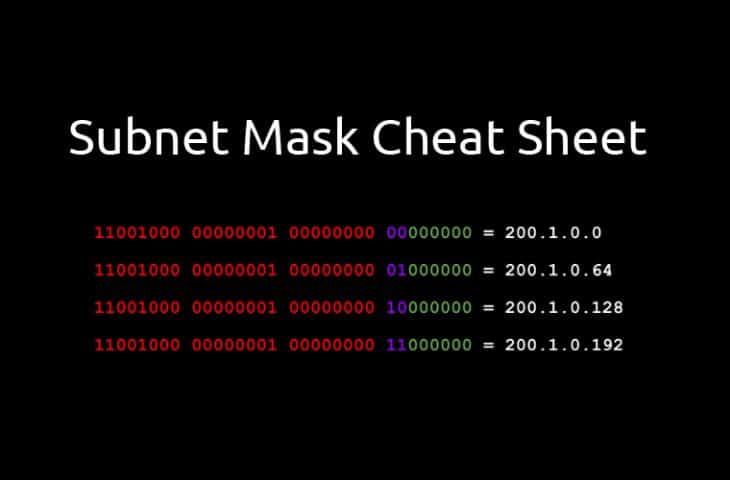
One part identifies the host (computer), the other part identifies the network to which it belongs. The tables below depict the number of subnetting bits and the resulting network, broadcast address, and host addresses. The following diagram modifies the above example by moving 2 bits from the host part to the network prefix to form four smaller subnets each one-quarter of the previous size.Ī subnet mask is used to divide an IP address into two parts. RFC 1878 Subnet Table December 1995 Subnets and Networks The number of available network and host addresses are derived from the number of bits used for subnet masking. This divides a network into smaller subnets.

This IPv4 Subnet Chart can assist you in looking up how a network is broken up into subnets. The subnet mask is a 'quad-dotted decimal representation'. This shared information is known as a routing prefix, and in IPV4 (Internet Protocol Version 4), the routing prefix is called a subnet mask. IP routers do not forward network broadcast packets.Subnetting is the process of designating some high-order bits from the host part as part of the network prefix and adjusting the subnet mask appropriately. Every single computer that is connected to a subnet shares an identical portion of the IP address. IP broadcast addresses can be used only as the destination IP address. It is used by certain firewalls and routers like Cisco for access control listīroadcast: The broadcast of a network is a reserved address to send a message to all hosts in the subnet. Subnetting is the procedure of dividing a network into smaller networks (subnets) or smaller groups of IP addresses. Wildcard: The wildcard is the inverse of the subnet mask. For a /31 subnet with only two possible address, the number of usable addresses would be zero.
Subnet mask table class a how to#
Generally, within a subnet, two host addresses - all-zeros and one all-ones are reserved as network address and broadcast, respectively. Since there are only a few options for how to subnet Class A, Class B, and Class C networks, I list the options for each class in summary Tables Table 18-3 through Table 18-5.

Without CIDR, the routing table would become quite large, as every network needs an own entry. Consider this example, where a router needs to distribute traffic for eight separate networks through the gateway 192.168.1.1: ip route 192.168.2.0/27 192.168.1.1 Simply spoken, CIDR using address aggregation can be used to address multiple networks with one single routing entry. Another problem with a classful setup is, that the bandwidth usage is quite high when routers exchange their routing information. But also the performance was compromised, since large tables need to be looked up without a more dynamic IP interval mechanism, like CIDR imposes.

Subnetting table for first example of VLSM. Following figure explains above steps and Subnetting.

CIDR: Subnet mask: Network bits: Host bits. The memory usage of classful routing is enormous, which results in unreasonable expensive hadware. Subnetting charts not only provide this information but also help us in selecting appropriate block sizes and subnet masks for segments. What is CIDR?ĬIDR or Classless Inter Domain Routing was developed to reduce the increasing size of routing tables of large routers, which was quite hard with classful routing. Please note: IP addresses can be cut off, if the remaining octets are just zero. 192.168.0.1: Simple Address in standard class.


 0 kommentar(er)
0 kommentar(er)
